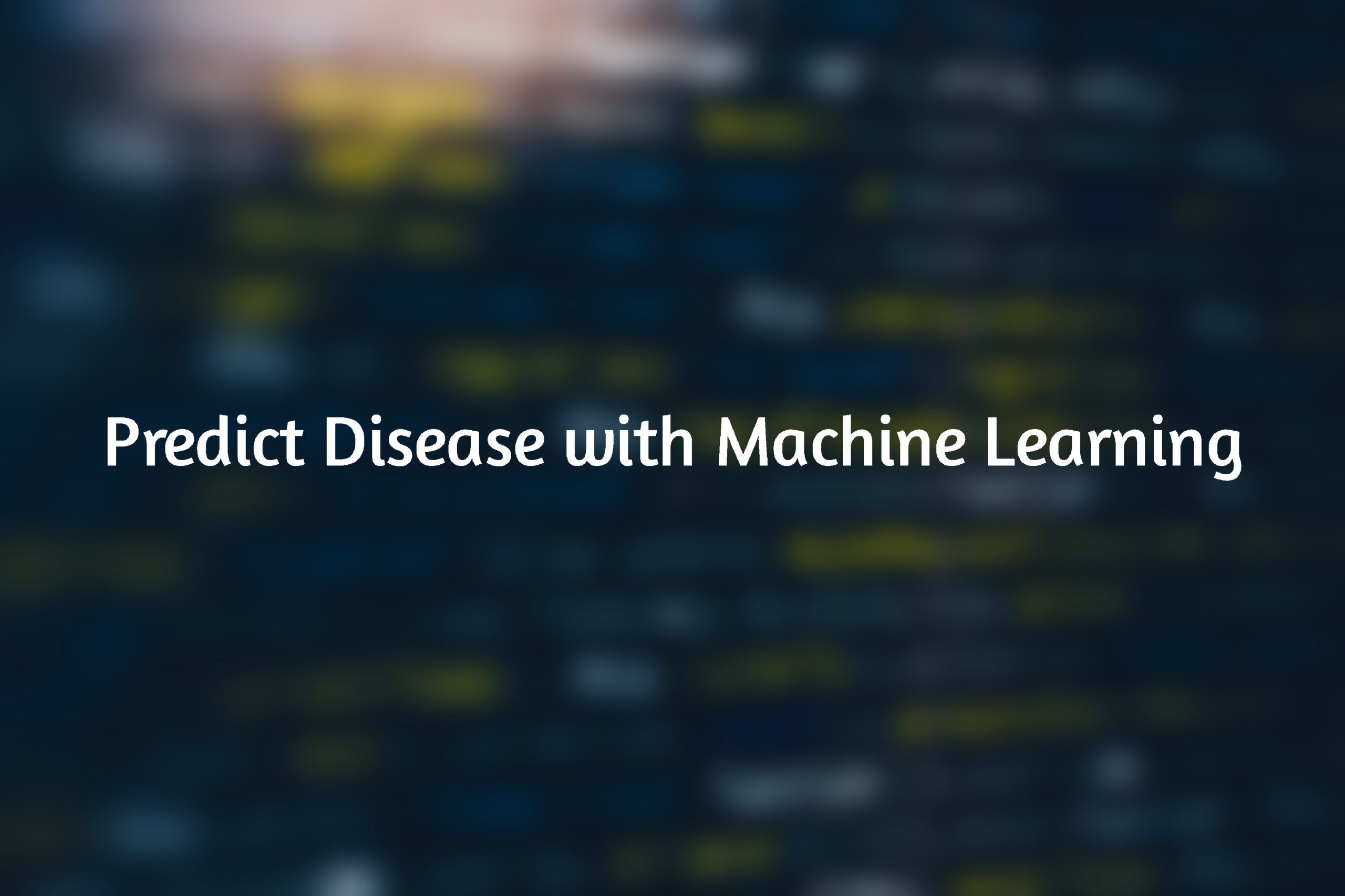Predicting Disease with Machine Learning
In the fast-paced world of healthcare, accurate disease diagnosis and timely treatment are crucial for ensuring positive patient outcomes. Misdiagnosis or delayed diagnosis can lead to significant consequences for individuals and strain healthcare systems. However, advancements in machine learning and data science offer promising solutions to assist healthcare professionals to predict disease with machine learning.
In this article, we will embark on an exciting project involving machine learning techniques to predict a specific disease based on patient symptoms and medical records. This comprehensive step-by-step guide is tailored for data science students, aged 18-25, looking to apply their skills in a meaningful and impactful way.
Predict Disease with Machine Learning: Understanding the Problem
The healthcare industry faces the constant challenge of accurately diagnosing diseases amidst various symptoms and medical information. Healthcare providers need practical tools that can aid in disease classification, enabling them to make timely and precise diagnoses. Our project aims to address this challenge by developing a machine-learning model capable of predicting the presence or absence of a specific disease based on a range of input features, including patient symptoms, demographic information, and medical history.
Predict Disease with Machine Learning: Methodology
To tackle the disease classification problem, we will employ supervised machine-learning techniques. Supervised learning involves training a model using labeled examples, where the input features (such as patient data) are associated with corresponding disease labels. Our model will learn from these examples to make predictions on unseen data. Specifically, we will build a classification model that can accurately classify patients into disease or non-disease categories based on their features.
Predict Disease with Machine Learning: The Objective
The primary objective of this project is to develop a robust and accurate disease classification model that can assist healthcare professionals in making timely and accurate diagnoses. By automating the classification process, we aim to reduce the chances of misdiagnosis and provide valuable decision support for healthcare providers. This project emphasizes the importance of leveraging data science skills to make a positive impact in the healthcare industry, ultimately improving patient care and outcomes.
Predict Disease with Machine Learning: Python Implementation:
Now, let’s delve into the practical implementation of our disease classification project using Python. We will leverage the sci-kit-learn library, a powerful machine-learning library in Python, to build our classification model. Ensure that you have Scikit-learn installed before proceeding. You can find complete guidance and implementation of this project on GitHub.
Let’s break down the implementation steps:
Step 1: Importing the necessary libraries and modules:
In this initial step, we import the required libraries and modules that will be utilized throughout the project. These include pandas for data manipulation, sci-kit-learn for machine learning algorithms, and various other modules for evaluation and analysis.
Step 2: Loading the dataset:
Next, we load the dataset into Pandas DataFrame, a popular data manipulation tool in Python. The dataset contains labeled examples of patients with and without the specific disease of interest. This dataset will serve as the foundation for training and testing our classification model.
Step 3: Preprocessing the data:
Before training the model, it is essential to preprocess the data. This involves handling missing values, encoding categorical variables, normalizing or scaling numerical features, and any other necessary data transformations. Preprocessing ensures that the data is in a suitable format for machine learning algorithms.
Step 4: Splitting the data into training and testing sets:
To evaluate the performance of our model, we split the dataset into training and testing sets. The training set will be used to train the model, while the testing set will serve as unseen data to assess the model’s accuracy and generalization capabilities.
Step 5: Training the classification model:
Using the training set, we initialize a classification algorithm, such as a Random Forest classifier, and train it on the labeled examples. During the training process, the model learns patterns and relationships between the input features and disease labels.
Step 6: Evaluating the model:
Once the model is trained, we evaluate its performance using the testing set. We make predictions on the testing set and compare them with the true disease labels to calculate performance metrics such as accuracy, precision, recall, and F1 score. These metrics provide insights into the model’s effectiveness in classifying patients accurately.
Step 7: Utilizing the trained model for predictions:
After assessing the model’s performance, we can utilize the trained model to make predictions on new, unseen data. This could include patient records that were not part of the original dataset. The trained model will help healthcare professionals make predictions about disease presence, contributing to more accurate diagnoses and improved patient care.
Now, let’is dive into the practical implementation of our disease classification project using Python. We will leverage sci-kit-learn, a popular machine-learning library in Python, to build our classification model. Before proceeding, ensure that you have Scikit-learn installed.
Import the necessary libraries and modules:
import pandas as pd from sklearn.model_selection import train_test_split from sklearn.ensemble import RandomForestClassifier from sklearn.metrics import accuracy_score
Load the dataset:
# Load the dataset into a pandas DataFrame
data = pd.read_csv('path_to_dataset.csv')
Preprocess the data:
# Separate the features (X) and target variable (y)
X = data.drop('disease_label', axis=1)
y = data['disease_label']
# Perform any necessary preprocessing steps, such as handling missing values or encoding categorical variables
# Example: X = X.fillna(0)
Split the data into training and testing sets:
X_train, X_test, y_train, y_test = train_test_split(X, y, test_size=0.2, random_state=42)
Train the classification model:
# Initialize the random forest classifier clf = RandomForestClassifier() # Train the model on the training data clf.fit(X_train, y_train)
Evaluate the model:
# Make predictions on the test data
y_pred = clf.predict(X_test)
# Calculate the accuracy of the model
accuracy = accuracy_score(y_test, y_pred)
print("Accuracy:", accuracy)
Use the trained model for predictions:
# Make predictions on new, unseen data
new_data = pd.read_csv('path_to_new_data.csv')
predictions = clf.predict(new_data)
# Print the predictions
print("Predictions:", predictions)

